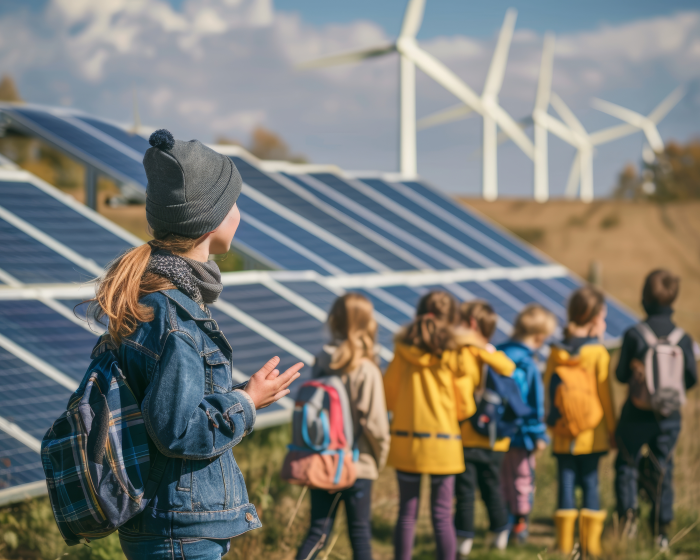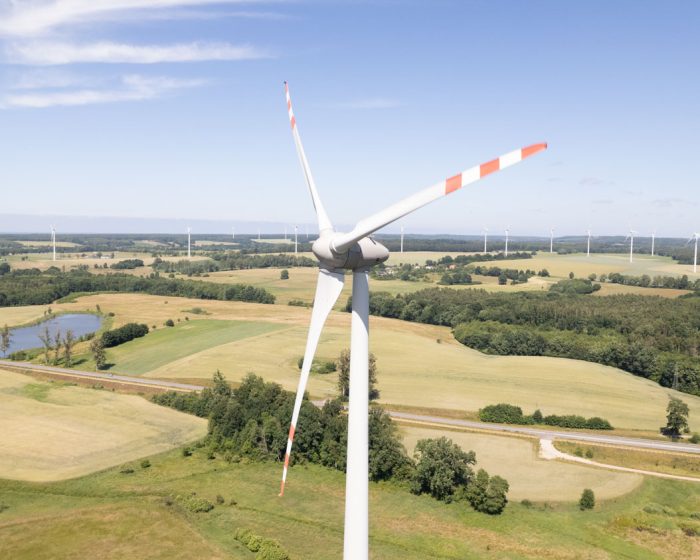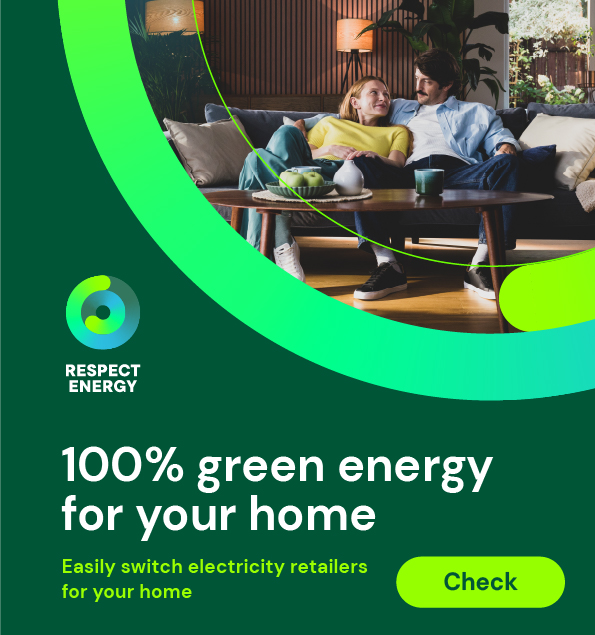Stability and efficiency: technological truths about RES
Have you wondered what people’s emotions were when the first electricity poles appeared and electricity reached homes in the early 20th century? Imagine a mix of curiosity, hope, but also uncertainty and fear. Electrification was a symbol of progress, but for many also a source of concerns and fears.
Every new technology evokes mixed emotions. The same is true today, in the age of the green revolution. The use of renewable energy sources (RES) offers the opportunity for cleaner air, environmental protection and sustainable development. At the same time, it continues to stir up controversy. In this article, we will answer the most important questions related to technologies in renewable energy.
Can a grid based on renewable energy sources be reliable?
- Imagine a house powered solely by solar and wind energy. What happens when there is no wind and the sky is covered with clouds? Does it mean darkness and a cold dinner? Fortunately not! Today's technologies mean that a RES-based grid can be reliable and better prepared for sudden changes than traditional systems.
- That said, what about storage? This is where advanced batteries come into play - similar to those in phones, but much larger and more efficient. They store energy during periods when excess energy is generated and give it back when demand increases, ensuring system stability.
Renewables have another ace up their sleeve: distributed energy sources. Imagine hundreds of thousands of homes with solar panels on their roofs that power an integrated system. This makes power outages less frequent, because a failure in one place does not affect the entire grid. Can traditional power stations achieve this? It only takes the failure of one coal-fired power station to cause a black-out in an entire region. Meanwhile, RES-based grids are like a giant spider web – flexible and resilient to local problems.
Do RES installations really need a lot of space?
Wind and solar farms can seem huge. Do we have to sacrifice valuable land to have them built? Not necessarily. There are creative solutions that minimise the impact of RES installations on the space, and some that further enhance their functionality.
One such solution is agrivoltaics. Solar panels are mounted on structures that allow plants to grow beneath them. They additionally protect the crops from excessive sun, rain or hail.
In cities, panels on the roofs of residential buildings, skyscrapers or car parks have become a part of everyday reality. Increasingly, solar farms are being installed on bodies of water, where the panels produce energy and reduce water evaporation. Modern wind turbines are built at sea, where the wind is stronger and more stable.
Is it more expensive to build RES installations than to create traditional power plants?
At first glance, RES appear more expensive than coal or gas-fired power plants. However, technological innovations steadily drive costs down. The cost of turbines has fallen by 40% in the last 10 years due to better materials and optimised performance. Modern turbines produce more energy from fewer units, which also reduces construction and maintenance costs.
The same is true for solar panels – their cost has fallen by more than 80 per cent in the last 10 years thanks to automation and larger scale production.
Equally important is the optimisation of the transmission network. In China, a system for the long-distance transmission of energy using high-voltage direct current (HVDC) has been developed. This allows energy from remote solar and wind farms to be transmitted efficiently to densely populated urban areas. In Europe, particularly in Scandinavian countries, so-called ‘smart grids’ are being developed, which minimise losses and reduce operating costs by automatically managing energy flows.
Innovations such as energy storage also help to optimise costs. Large-scale batteries, such as those in California or Australia, store energy generated during periods of overproduction and return it to the grid when it is needed most. This ensures more reliable operation of power grids without the need to build expensive back-up power plants.
Can renewables work around the clock?
As the sun only shines during the day and the wind doesn’t blow all the time, the question is: can RES operate around the clock? The answer is yes, thanks to energy storage and modern grid management. Storage facilities retain surplus energy and give it back when production drops. In California, lithium-ion batteries have helped avoid blackouts, and in Australia they support grid stability.
Innovative grid management technologies allow flexible use of different energy sources. Hydroelectric power plants can act like ‘batteries’: water is pumped into the upper reservoirs during overpro-duction and powers the turbines when energy is needed. Hybrid overproduction combine different energy sources, ensuring a smooth supply even under fluctuating conditions.
Hydrogen technology, used in Germany, uses surplus energy from wind farms to produce green hydrogen, which serves as fuel at times of peak demand.
Does the world have enough materials to build a green future?
Building RES requires metals such as lithium, cobalt and copper. Do we have enough of them? Yes, if we manage resources sensibly. Recycling already reduces the need for primary raw materials. In Europe, companies are recovering up to 90% of valuable materials from used appliances.
Alternative materials are also helping. Turbines are moving away from neodymium magnets to new technologies. Sodium batteries can replace lithium-cobalt batteries. Thanks to innovation, new generations of panels, turbines and batteries use less raw materials, offering higher efficiency.
The development of a closed-loop economy and the substitution of rare elements provides an opportunity to develop planet-friendly technologies.
Read also

The importance of renewable energy: the road to a cleaner future
Have you ever wondered what the world would look like if we exploited the full potential of renewable energy sources? Imagine cleaner air, lower energy bills and a stable electricity supply in every part of the world. Sounds like utopia, doesn’t it? But these goals are more achievable than you might think. Renewables are more […]

Wind in the sails of RES – wind energy in practice
Wind is the most popular source of clean energy. Currently 53 countries in the world are developing wind energy, 27 of which are in Europe. The leader in this field is Denmark, which generates almost 50% of its electricity from wind farms.[1]In Poland, this is more than 16% of total energy production[2]. Globally, the five […]




